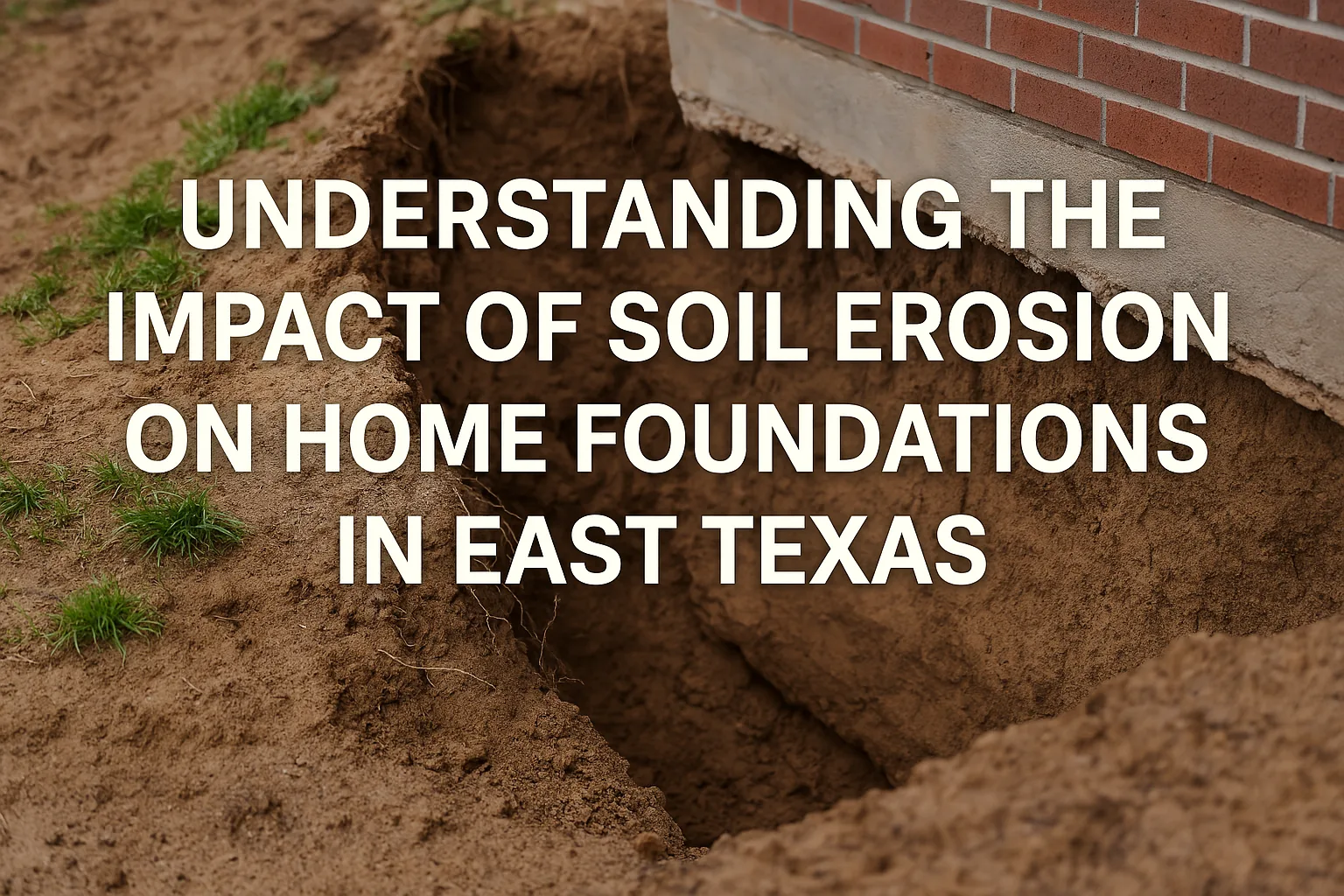Understanding the Impact of Soil Erosion on Home Foundations in East Texas
When we think of threats to our homes, we often consider storms, termites, or even foundation settlement. But one of the most overlooked and persistent issues in East Texas is soil erosion—a silent force that can seriously undermine the stability of your home’s foundation.

What Is Soil Erosion?
Soil erosion is the gradual displacement or loss of the upper layer of soil due to wind, water runoff, or human activity. In East Texas, the heavy clay soils combined with seasonal rain and inconsistent land grading make homes especially vulnerable to erosion.
How Soil Erosion Affects Foundations
When the soil supporting your foundation begins to erode, it can lead to:
- Uneven settling: As the soil washes away, parts of your home may settle more than others, causing structural imbalance.
- Cracks in walls and slabs: Gaps in the soil lead to movement in the foundation, which often shows up as cracks in your drywall, flooring, or exterior bricks.
- Drainage issues: Eroded areas may create channels for water to collect near your foundation, compounding the damage over time.
Warning Signs of Soil Erosion Around Your Foundation
- Visible soil displacement near the home’s perimeter
- Gaps between the soil and foundation slab
- Cracks in the foundation or basement walls
- Water pooling after rainfall
- Sinking walkways or patios
Why East Texas Is Particularly Susceptible
The region’s combination of clay-based soil and intense rainfall means that the ground expands when wet and contracts when dry. This movement, known as soil shrink-swell, puts stress on your foundation and makes any loss of supporting soil even more critical.
Steps to Protect Your Home
Fortunately, there are several proactive steps homeowners can take to reduce the risks:
- Improve drainage
Ensure gutters are working properly and direct water at least 5 feet away from your home. Consider French drains if needed. - Add vegetation
Plant grass or native plants to stabilize soil. Their root systems naturally hold soil in place and reduce runoff. - Use erosion control materials
Installing landscape fabric, mulch, or stone barriers can help control where and how water flows. - Grade your yard properly
Your lawn should slope away from the house, allowing water to drain naturally instead of pooling near your foundation. - Schedule regular inspections
At Rite-Way Foundation Company, our team provides professional assessments to detect early warning signs and recommend repairs before the damage becomes extensive.
Long-Term Impact and Cost of Neglect
Ignoring erosion can lead to thousands of dollars in foundation repairs, not to mention the potential for mold, water intrusion, and decreased property value. Early detection and prevention are key.
Understanding how soil erosion impacts home foundations in East Texas is crucial for protecting one of your most valuable investments—your home. If you’ve noticed signs of erosion or are concerned about the long-term stability of your foundation, contact Rite-Way Foundation Repair today for a no-obligation inspection.
U.S. Department of Agriculture – Natural Resources Conservation Service – Learn more about erosion and land conservation.

